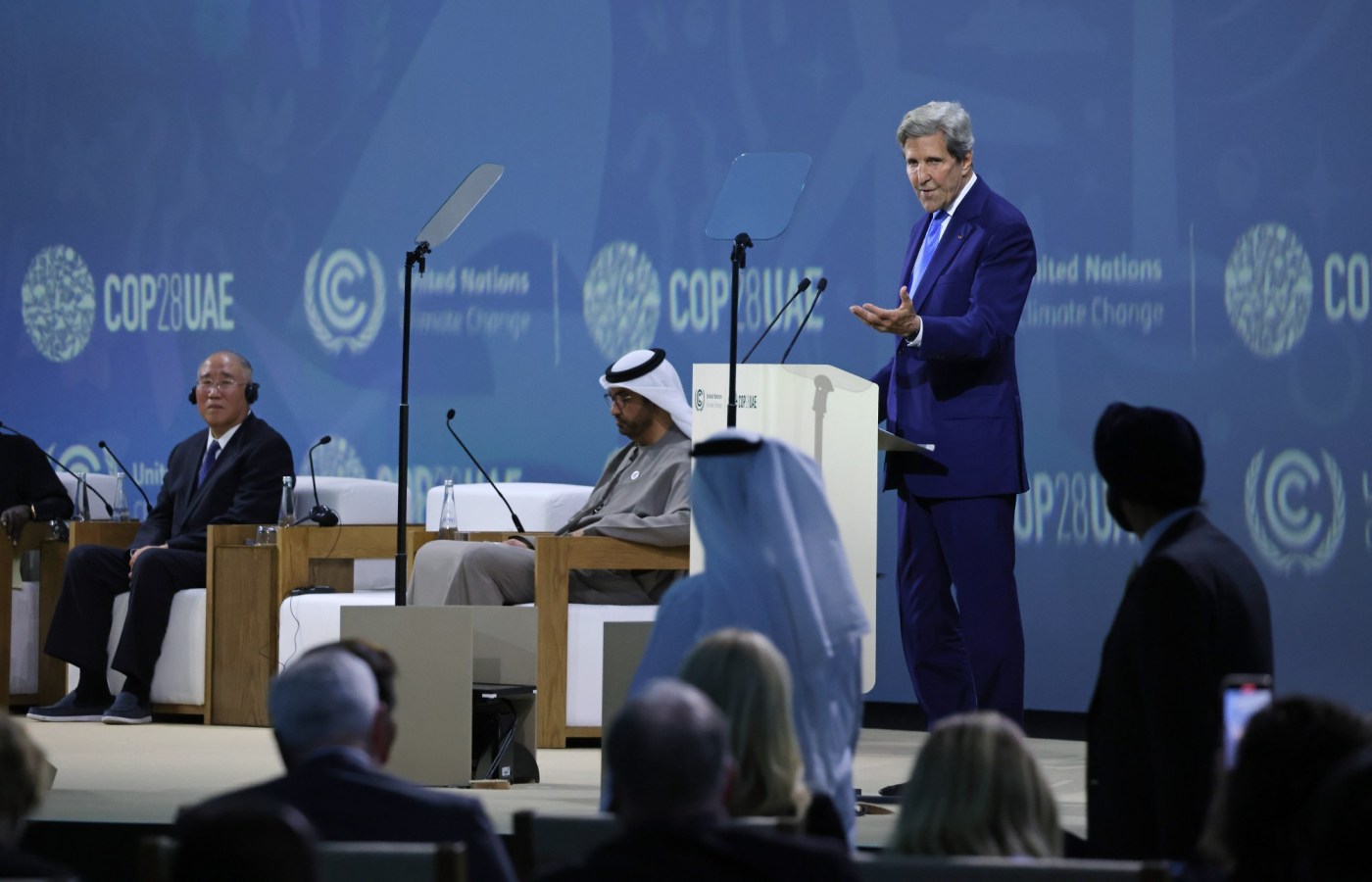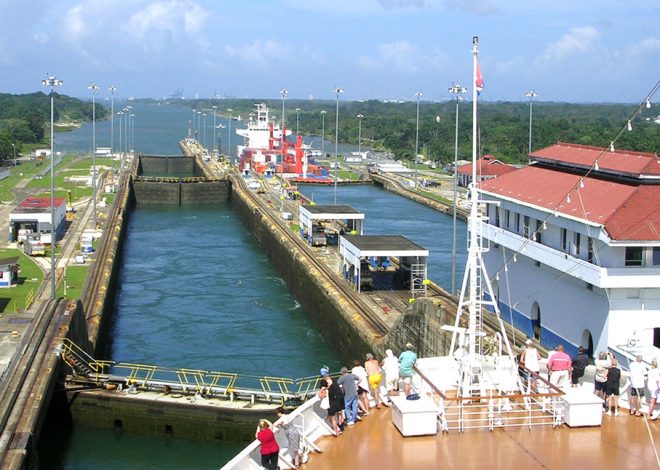
The world promised to tame methane. Emissions are still rising
By Aaron Clark and Zachary R Mider, Bloomberg News (TNS)
Sitting in his cramped office in Paris, Manfredi Caltagirone admits that one of the world’s highest-profile efforts to cut methane emissions so far isn’t stopping the gas from escaping and warming the atmosphere.
Caltagirone heads the International Methane Emissions Observatory, or IMEO, an informal police force that’s the tip of the spear in the global war against the potent greenhouse gas. His team at the United Nations includes researchers who scour satellite data to identify and sound the alarm on methane plumes in an effort to help nearly 160 countries that are backing a pledge made almost three years ago to cut pollution 30% by 2030.
Since it launched a notification system in 2022, IMEO has told companies and governments about more than 1,100 giant methane clouds escaping from oil and gas facilities. Yet the number of releases that it’s verified have been halted “can be counted on two hands, maybe one,” Caltagirone said. “Action taken in response to the notifications is lower than we were expecting.”
Tackling methane — and doing so quickly — has been declared a crucial priority by world leaders and fossil fuel executives, many of whom have signed on to an accelerating series of pledges since 2021 to shore up their green credentials. New commitments have been among key outcomes from successive annual U.N. climate conferences, and major polluters insist they are making progress. The 12 members of the Oil and Gas Climate Initiative, which includes Saudi Arabia’s Aramco, Exxon Mobil Corp. and China National Petroleum Corp., say they’ve halved emissions of the gas since 2017.
Yet methane emissions from the fossil fuel industry, including coal mining, remain close to a record level set in 2019 as supply continues to expand, according to International Energy Agency data. Concentrations of atmospheric methane, from human and natural sources, have surged faster than any period on record.
“There’s a huge disagreement between what companies say they’re emitting and what the scientific field thinks that they’re emitting,” says Rob Jackson, a Stanford University climate scientist who has tracked the rise in methane. “We’re not seeing real action on a scale or at a pace that’s making a difference.”
Because methane traps much more heat than carbon dioxide in the short term, cutting emissions, especially from fossil fuel systems, is widely seen as one of the fastest and most achievable ways to slow global warming. Money is also pouring into technologies that can curb methane from trickier sources such as cows and landfills.
Methane will again be a focus when more than 190 countries gather in Baku for COP29 talks later this month. Azerbaijan, this year’s host, is a major exporter of gas and a serial emitter. This year, it signed on to the flagship Global Methane Pledge to cut emissions and will put forward a new international commitment to reduce methane from organic waste. The COP29 presidency will also convene a summit with the U.S. and China on methane and other non-CO2 greenhouse gases.
Still, taming methane pollution will take years, even if the recent flurry of pacts and agreements are successful. So far, at least, there’s little to show for those highly publicized efforts.
The ability to pinpoint the source of emissions from the sky was supposed to be a breakthrough in combating methane.
John Kerry, the former U.S. climate envoy, cast it as a shift in the balance of power between activists and companies at last year’s COP28 conference in Dubai. “You can run but you can’t hide,” Kerry warned methane polluters. “We have to be prepared to name and shame.” (Bloomberg Philanthropies has provided funding to help slash methane emissions from fossil fuels, which has included a project with IMEO and other partners. The entity is the philanthropic organization of Michael Bloomberg, the founder and majority owner of Bloomberg LP, which owns Bloomberg News.)
Today, data from IMEO is pouring in. Since last year, the agency has informed the U.S. Department of State of more than 160 large methane clouds at 117 different locations. U.S. agencies have been “aggressively pursuing” the reports, the department said in a statement. At least one of the notices led to the identification of a previously unknown leak, and some prompted companies to mitigate emissions, according to the statement.
Other examples in the U.S. and off the coast of Thailand help illustrate the difficulties being experienced in quickly addressing observed leaks.
In one IMEO notice, sent in July 2023, Caltagirone’s team said they had spotted a cloud of gas spewing from a site known as Dominator Compressor Station in an oil-rich region of southern New Mexico, where a collection of half a dozen gigantic engines push gas from nearby wells into a pipeline. IMEO found that it was releasing methane at a rate that would have the same short-term planet-warming power as the tailpipes of 28,000 idling cars.
IMEO’s note was forwarded to the Environmental Protection Agency by the State Department, according to records obtained through a Freedom of Information request. The documents show IMEO requested authorities to follow up with operators, but don’t indicate what, if anything, the EPA did in response. In subsequent months, more clouds were observed on 10 further occasions. The EPA didn’t comment on the Dominator releases.
The New Mexico Oil Conservation Division, which regulates methane emissions in the state, said it wasn’t aware of the releases until contacted by Bloomberg Green this April. An investigation has since been concluded without faulting Energy Transfer LP, the company that operates the compressor station.
All of the releases were due to repairs and maintenance and were “within our permitted allowable emissions,” Energy Transfer said in a statement.
In a separate case, IMEO began issuing warnings from last November about an offshore gas platform in the Gulf of Thailand that’s been intermittently releasing methane for more than a decade.
The facility is run by units of Malaysia’s Petroliam Nasional Bhd. and Thailand’s PTT Exploration and Production Pcl, which are both among more than 140 companies that are members of the Oil and Gas Methane Partnership 2.0, an IMEO initiative aimed at improving the reporting and mitigation of releases.
Scientists at IMEO, part of the U.N. Environment Programme, continued to observe methane from the site between July and early September and issued more warnings.
Carigali-PTTEPI Operating Company Sdn Bhd, which operates the site for the partners, has conducted a “comprehensive internal assessment, including drone surveys of our flare system,” in response, it said in a statement. The company said it had found no methane leaks at the site’s central processing platform, and that “facilities remain safe for operations and the surrounding areas.”
Related Articles
Finding Sanctuary: The season of the California sea lion
California is about to change fuel standards. That means higher gas prices. But how high?
Crashing waves in a hilltop village, a night of terror from Spain’s floods
Spain flood survivors hurl mud at the royals and top government officials
How to discover the Bay Area’s hidden wildlife world, with two easy tricks
Curbing methane with the urgency required remains challenging, though slow progress toward global targets mirrors the experience of efforts to decarbonize many other segments of the global economy. Everyone from Texas oil barons to Iranian leaders have to be persuaded to give up decades-old habits like venting and flaring excess gas. Polluters also need to invest in better equipment and implement procedures that eliminate intentional releases and minimize accidental ones.Delivering capacity globally to “receive, remedy, and respond to detected emissions events will require significant improvements to technical capacity and strengthening of emissions reduction mandates,” the State Department said. Governments should seek to include methane-specific commitments in the next round of national climate plans lodged with the U.N., according to the IEA. In talks last year, the U.S. and China vowed to include such measures in their 2035 goals.Climate diplomats insist that the increasing availability of satellite data will translate into more significant methane reductions in the years ahead, and that an improved ability to measures releases will spur companies or governments to take further action.The EPA is in the process of creating a legal framework, called the Super Emitter Program, that will require companies in the U.S. to investigate and respond to notifications of leaks. That program will rely on data from by third parties and the EPA says it’s “in discussions” to include IMEO’s detections.
“Data by themselves don’t reduce emissions,” Caltagirone said. Some companies are making a real effort, but “it’s still a minority of the industry,” he says.
Methane emissions from 13 of the world’s major fossil fuel producing regions have risen 7% from 2020 to 2023, according to Kayrros SA, a satellite-data analysis company. That includes the U.S., the world’s top producer of oil and gas. Still, two major regions — Australia’s Bowen Basin, a coal hub that’s been shutting down some old mines, and Turkmenistan’s oil and gas fields — saw significant drops over the same period.
Progress in Turkmenistan is one example of diplomatic efforts to cut methane having an impact. The U.S. government is working with officials in the isolated former Soviet state on efforts to plug leaks from its aging fossil fuel infrastructure. The nation’s most notorious site is the Gates of Hell, a 70-meter wide crater created by a drilling accident that’s been burning gas for more than four decades.
The relentless rise in methane emissions has galvanized a new generation of scientists who are convinced the best way to hold polluters to account is to trace emissions back to specific facilities — leaving zero room for doubt. If there’s indisputable evidence about where the plumes are coming from, the thinking goes, companies will be forced to respond.
Newly launched high-resolution satellites are providing better data, and while the current focus is mainly on oil and gas, IMEO aims to expand its monitoring to include more emphasis on metallurgical coal mines, landfills and agriculture sites.
That’s making the typically slow pace of action to stem the leaks even more frustrating for scientists, who find they are examining a expanding landscape of methane clouds that never seems to shrink.
“When you see plumes coming from all those horrible industrial places, it just makes me very angry seeing how bad it can be,” says 28-year-old Solomiia Kurchaba, a postdoctoral researcher at SRON Netherlands Institute for Space Research who specializes in machine learning and atmospheric science.
(With assistance from Jennifer A Dlouhy and Yasufumi Saito.)
©2024 Bloomberg L.P. Visit bloomberg.com. Distributed by Tribune Content Agency, LLC.


